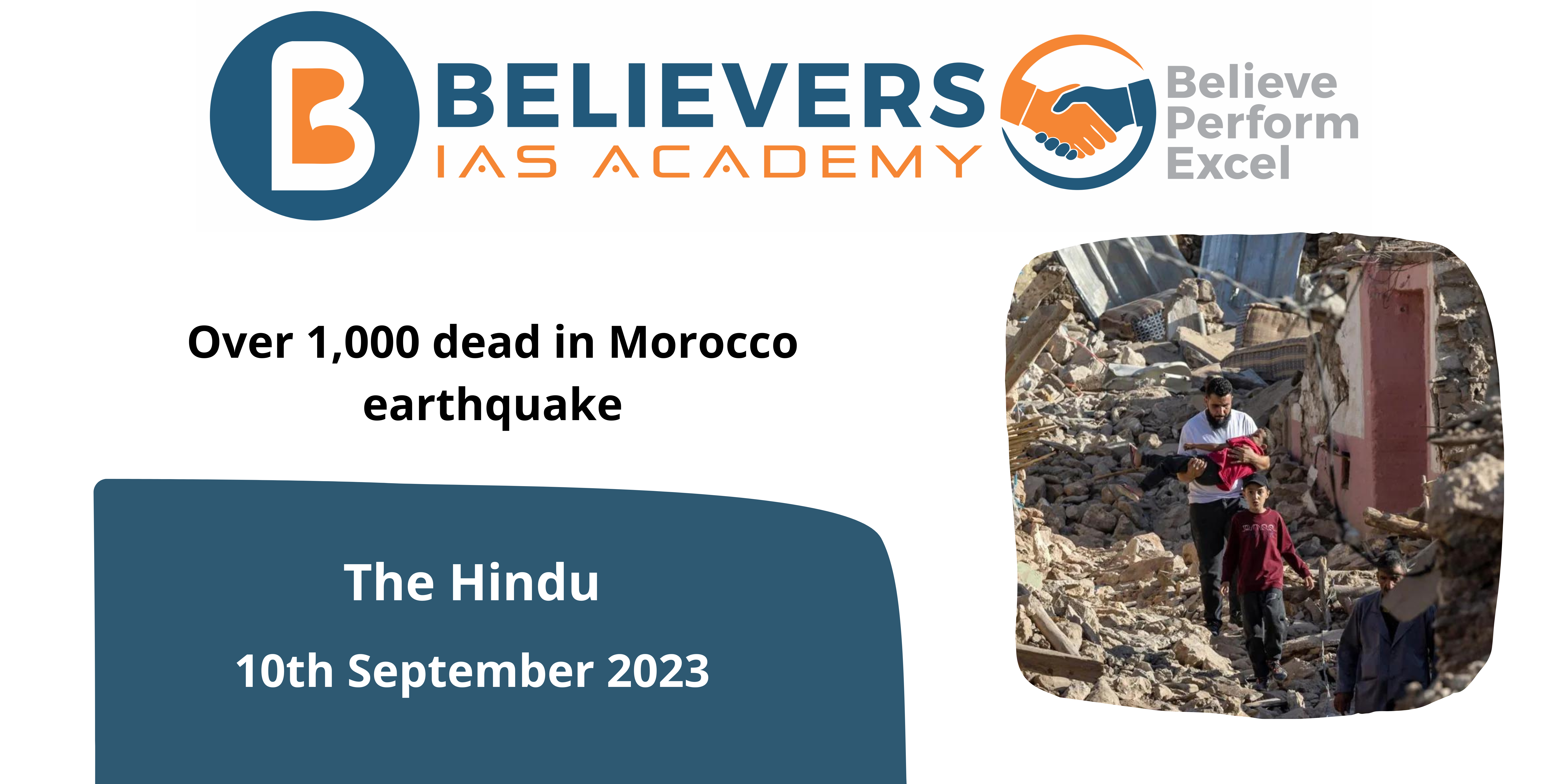Over 1,000 dead in Morocco earthquake
Context
A rare, strong earthquake slammed Morocco late on Friday night, causing at least 1,037 fatalities, 1,204 injuries, and significant building damage from Atlas Mountain communities to the ancient city of Marrakech.
Where is Morocco situated?
- In Africa’s northwest sits the nation of Morocco. The North Atlantic Ocean and the Mediterranean Sea surround it. The size of Morocco is comparable to that of California. The gentle seashore and the severe Sahara are separated by the High Atlas Mountains.
- With Rabat as its capital, Morocco is a constitutional monarchy. The monarch serves as both the head of state and the head of government by selecting the prime minister. Members of the nation’s bicameral parliament are chosen indirectly.
- Moroccan mosques, palaces, riads, and medinas are well known. The Hassan II Mosque in Casablanca, the Bahia Palace in Marrakech, and the Volubilis Roman ruins are a few famous examples of famous buildings.
Where did the earthquake occur in Morocco?
- On Friday night, Morocco was hit by a 6.8-magnitude earthquake that left at least 2,012 people dead and 2,059 injured. Near Marrakech, the earthquake struck the High Atlas mountain range. For several seconds, there was shaking. It was the country of Morocco’s most powerful earthquake in almost a century.
- King Mohammed VI of Morocco dispatched the army’s search and rescue units to locate and save any survivors. Drones and helicopters were used by the teams.
- Morocco is situated on a tectonic plate boundary between the African and European continents.
- Several leaders, including those of the US, France, Germany, Ukraine, and Russia, pledged support. According to US Vice President Joe Biden, US representatives have been in touch with Morocco to offer assistance.
How extensive are damages caused to the infrastructure?
- Buildings and infrastructure suffered severe damage as a result of the earthquake.
- Villages in the Atlas Mountains and the ancient city of Marrakech were among the areas that were impacted.
- Even Marrakech’s well-known Koutoubia Mosque, which was built in the 12th century, suffered damage.
Why was the region more affected by the earthquake?
- The earthquake brought home the difficulties in coping with big, uncommon earthquakes in areas where buildings might not be built solidly enough to withstand such seismic shocks.
- Future catastrophe mitigation efforts will probably concentrate on improving building codes and earthquake preparation.
What is the way forward from this situation?
- Immediate Relief and Response:
-
-
- Give the injured people’s lives a top priority by giving them urgent medical attention.
- Create makeshift shelters and offer impacted communities food, fresh water, and necessities.
- Send out search and rescue teams to find and aid survivors buried beneath the wreckage.
- To successfully coordinate response actions, make sure that the communication routes are operational.
-
- Determine the Amount of Damage:
-
-
- Make detailed assessments to ascertain the degree of harm to vital facilities, buildings, and infrastructure.
- Prioritize the most severely damaged sites for immediate restoration and recovery activities.
-
- Reconstruction and Rehabilitation:
-
-
- Create a detailed strategy for repairing all destroyed infrastructure, including houses, schools, hospitals, and government structures.
- To reduce future dangers, implement building norms and standards that give priority to earthquake-resistant construction.
-
- Assistance to Affected Community:
-
-
- Support survivors who are suffering from loss and traumatic events with emotional and social care.
- Help displaced people and their families find safe housing and access to necessities.
- Give individuals who lost their homes and jobs financial help and assistance to maintain their way of life.
-
- Long-term Preparedness for Disaster:
-
- bolster earthquake readiness initiatives, such as public education campaigns and drills.
- Spend money on seismic monitoring equipment to find and react to earthquake early warning indications.
- To lessen vulnerability to earthquakes, review and update the building codes and land-use planning.





